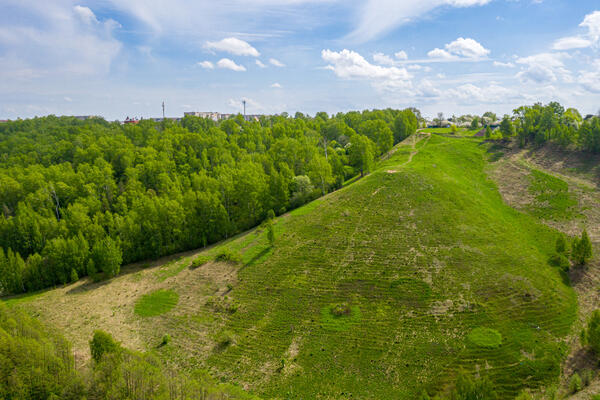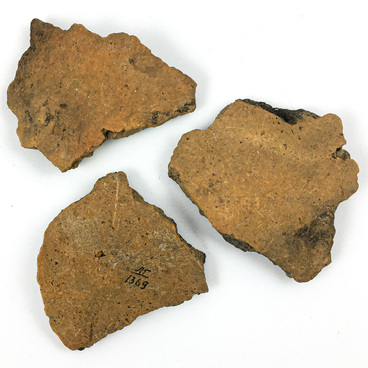Lysaya Gora is a hill of natural origin, where in the 6th century BC there were settlers who used tools made from animal bones. Pottery and ivory works, such as an awl and various amulets, were found in the settlement. This indicates that those lands were still inhabited at the beginning of the first millennium AD.
The settlement was protected on three sides by the steep banks of the Klyazma River, and on the fourth side was fortified by earth ramparts — their remains have survived to this day. The visitors can easily guess why the hill is called Lysaya (“bald” in Russian). It is surrounded by similar hills that are located on the banks of the Klyazma River and are covered with forests, however, this hill and its slopes surprisingly do not have a single tree growing on them.
There is a legend about Kazan Tatars attacking Russian lands in 1445. Rus had changed considerably since Batu Khan, and the Tatars also were not as powerful as before. The attackers were losing. As legend has it, Khan Amanak was killed in Gorokhovets. His army buried him on the banks of the Klyazma River, and each of the soldiers brought a handful of soil to the khan’s grave, eventually forming the hill.
In 1929, the mystery surrounding the hill attracted the 26-year-old archaeologist Otto Nikolayevich Bader. He came there three years after graduating from the archaeology department of the Faculty of Sociology of Moscow State University.
The scientists managed to establish that Lysaya Gora is an example of an ancient settlement of the Dyakovo culture. During excavations of Dyakovo settlements, it is common to find weights made of fired clay. There are varying opinions as to what their purpose might be: some scientists believe that they were used in looms, while others claim that these are buttons or covers for oil lamps. Another group of researchers associated such objects with the cult of ancestor worship.
No burial sites that could be traced to the Dyakovo culture have been found: the dead were most likely cremated, and the ashes were stored somewhere above the ground and have not been preserved. Over 90% of the objects discovered in the area of Lysaya Gora are made up of ceramics. The textile ceramics were prevalent with only a small amount of pit-comb and smooth ceramic objects. The excavations in that area also revealed various examples of ivory works.
The settlement was protected on three sides by the steep banks of the Klyazma River, and on the fourth side was fortified by earth ramparts — their remains have survived to this day. The visitors can easily guess why the hill is called Lysaya (“bald” in Russian). It is surrounded by similar hills that are located on the banks of the Klyazma River and are covered with forests, however, this hill and its slopes surprisingly do not have a single tree growing on them.
There is a legend about Kazan Tatars attacking Russian lands in 1445. Rus had changed considerably since Batu Khan, and the Tatars also were not as powerful as before. The attackers were losing. As legend has it, Khan Amanak was killed in Gorokhovets. His army buried him on the banks of the Klyazma River, and each of the soldiers brought a handful of soil to the khan’s grave, eventually forming the hill.
In 1929, the mystery surrounding the hill attracted the 26-year-old archaeologist Otto Nikolayevich Bader. He came there three years after graduating from the archaeology department of the Faculty of Sociology of Moscow State University.
The scientists managed to establish that Lysaya Gora is an example of an ancient settlement of the Dyakovo culture. During excavations of Dyakovo settlements, it is common to find weights made of fired clay. There are varying opinions as to what their purpose might be: some scientists believe that they were used in looms, while others claim that these are buttons or covers for oil lamps. Another group of researchers associated such objects with the cult of ancestor worship.
No burial sites that could be traced to the Dyakovo culture have been found: the dead were most likely cremated, and the ashes were stored somewhere above the ground and have not been preserved. Over 90% of the objects discovered in the area of Lysaya Gora are made up of ceramics. The textile ceramics were prevalent with only a small amount of pit-comb and smooth ceramic objects. The excavations in that area also revealed various examples of ivory works.




